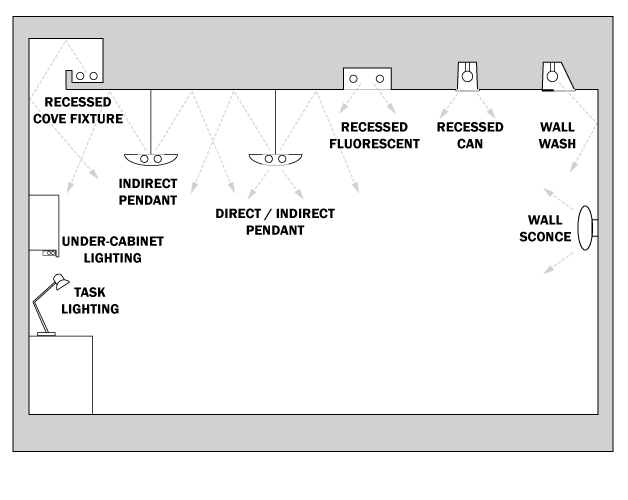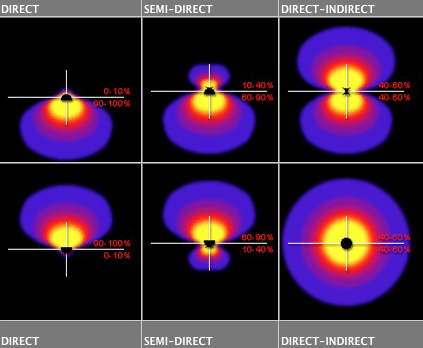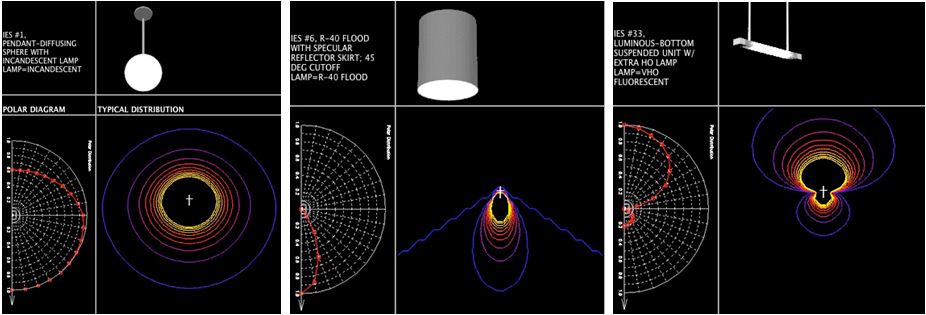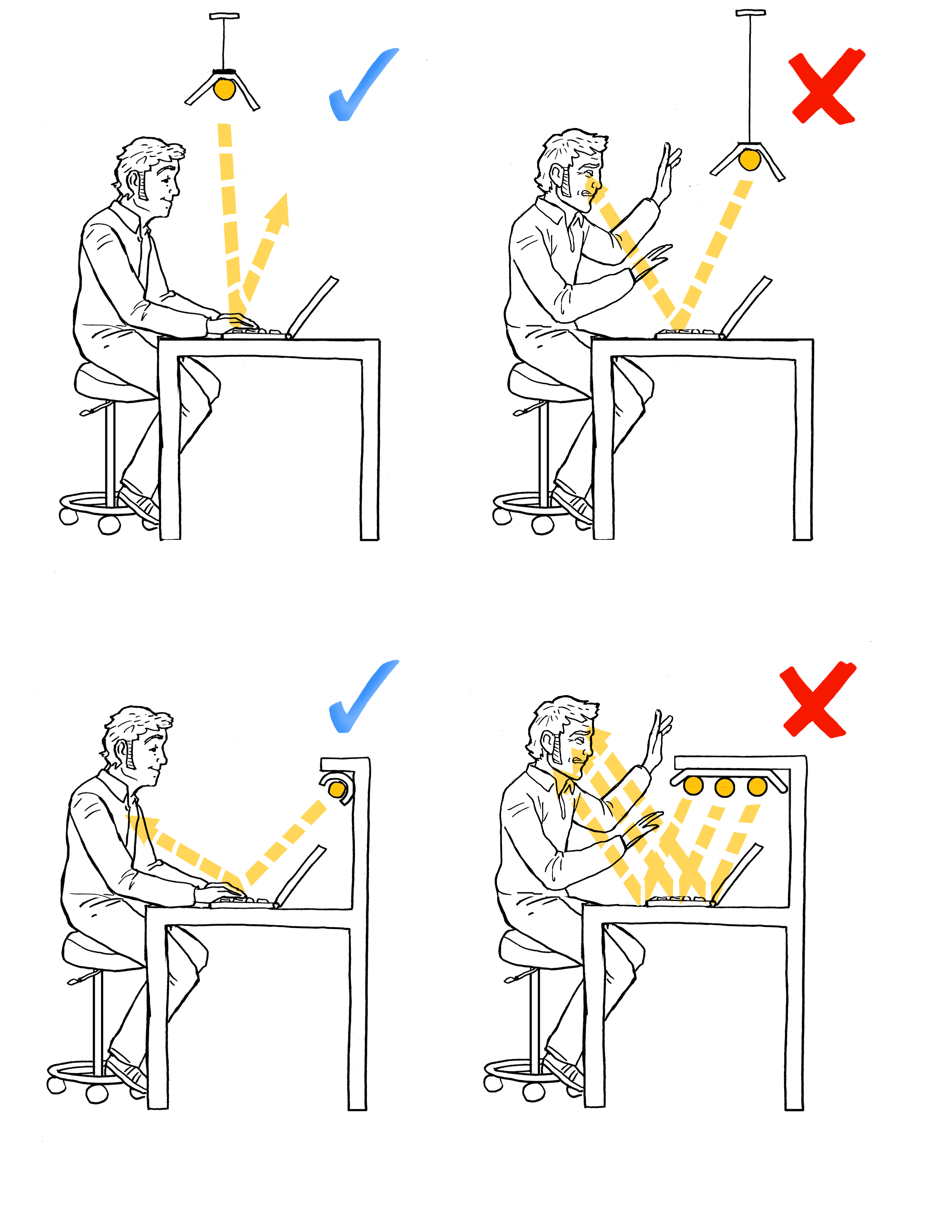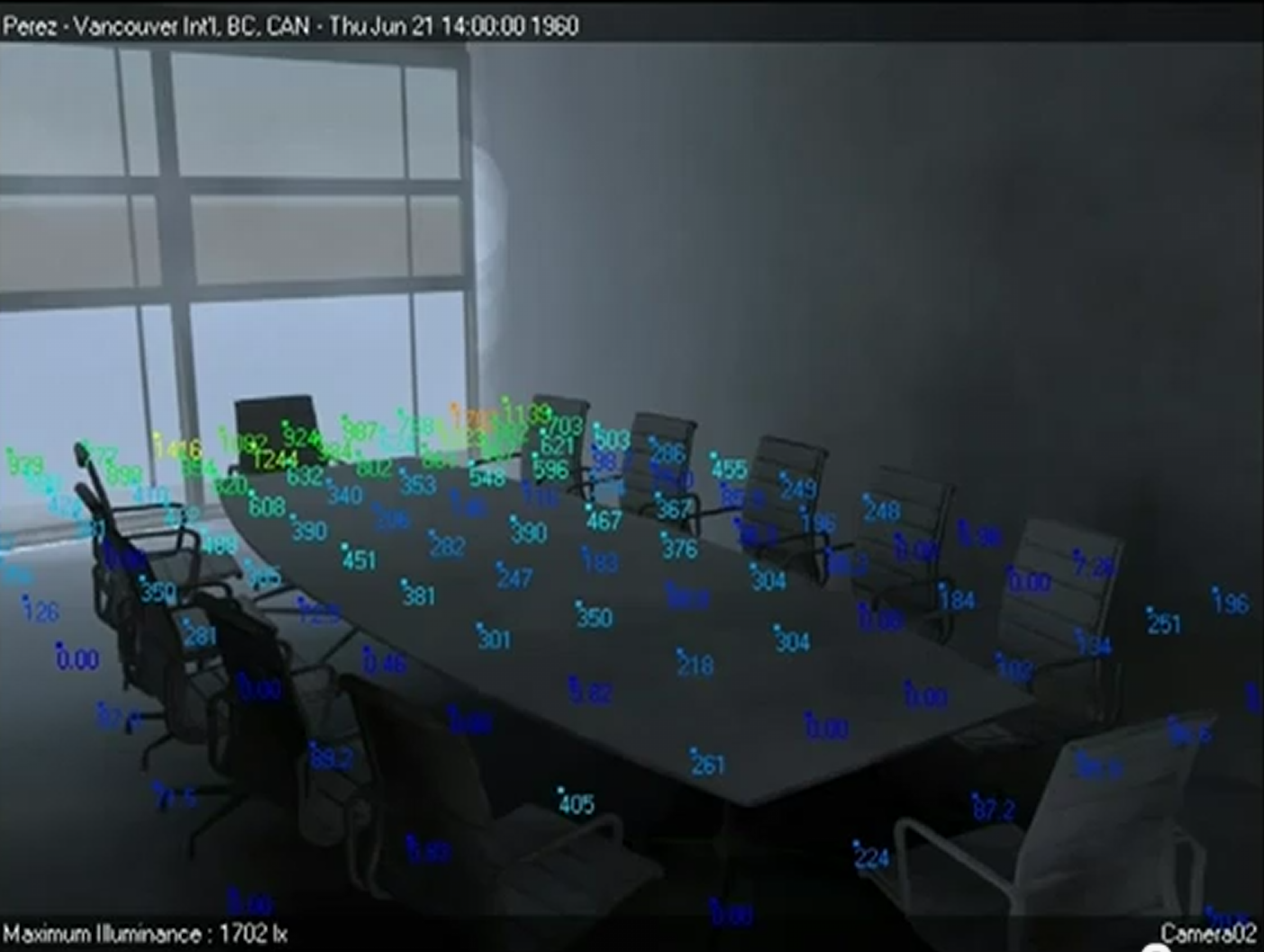You are here
Light fixtures ("Luminaires") are the hardware required to hold and operate artificial light sources; the layout of light fixtures is their arrangement in the room.
When complementing daylighting with artificial light, fixtures and layout can be as important to good lighting as the light sources themselves. Good fixture design and layout can distribute light well, separate task lighting from ambient lighting, provide good controllability, and even change the color of the light source.
Successful design of fixtures and layout is measured by testing visual comfort in the room for all activities in the room's program, and measuring the amount of energy required to achieve good visual comfort thresholds. The less energy required for comfort, the better. Use manufacturers that publish luminous efficacy measurements for certain light sources in certain fixtures, to avoid guessing how fixtures will affect sources.
Types of Luminaire
Luminaires are the fixtures that house lights. They greatly affect both the brightness and the spatial distribution of the light, because they bounce and/or filter the light from their lamps, for different effects. Types of luminaires are generally categorized by their light distribution. Some common distributions are shown below: direct, semi-direct, and direct-indirect.
Spatial distribution from luminaires
Generally, light shining on task surfaces is "direct" light, while light shining away from such surfaces is "indirect" light. Sometimes designers instead describe fixtures based on the direction of the light: "uplights", "downlights", or "sidelights".
The output distribution of a luminaire can be measured over a range of angles and plotted on a polar diagram. In it, the lines represent light levels actually measured at a fixed distance from the luminaire (usually 1 m) as it was rotated around to different angles. In most cases, the units of this graph will be lumens. However, these levels can be normalized from 0-1 to represent a multiplication factor instead; this provides for the use of different lamp powers in the fixture.
Types of Luminaire
(click to enlarge, see more detail in Building Science Fundamentals)
A luminaire refers to a complete lighting unit, including one or more lamps, reflective surfaces, protective housings, electrical connections, and circuitry. All these components affect the overall output of light from the unit. Even with a very bright lamp, translucent or semitransparent materials may reduce the flow of light, and reflective surfaces can quickly become dusty and dirty in some environments, also reducing output.
Lighting Layouts
Given the wide choice of different lamps and luminaires available, there is an almost infinite set of different arrangements of electric lights within a room that will provide a certain illumination level.
The primary concern in lighting layout is to avoid glare on activity surfaces. Such glare is a result of light bouncing directly into user's eyes, rather than diffusely.
Good and bad lighting locations, causing or avoiding glare
The ultimate choice of lighting layout will invariably be an aesthetic one— achieving the right feel or ambiance within the space. Doing this well comes from experience as a lighting designer and from simply applying a bit of thought to the space and how it is likely to be used.
The images below demonstrate just two of the many different ways of lighting a simple room to give exactly the same lighting levels on each work surface. Each layout has advantages and disadvantages. For instance, the first layout might use less energy, but the second layout will cause less glare and will have fewer shadows cast on work surfaces by occupants.
Different fixtures and layouts providing the same lighting levels with very different distribution
The Lumen Method of Lighting Design
The intuition of the architect alone is not sufficient to fully comprehend the interplay of light and predict with certainty the amounts of illumination in all parts of the room. On the other hand, computational tools available are also often insufficient in themselves to achieve "beautifully" lit buildings.
The simplest method of calculating the overall illumination level for evenly lit spaces1 is the Lumen Method. It uses both computation and intuition and is the calculation most used by lighting engineers when determining the number of luminaires for a given lighting level. The simple formula is as follows:
E = F / A
Where E is the average (or minimum) illumination level at the work plane (in lux), F is the useful lumen output of all sources (lumens) and A is the total surface area of the working plane (in m²). In terms of architectural design, solving for F allows the architect or engineer to determine the total amount of light required in the room. This is given by rearranging the formula as follows:
F = AE
Be aware that the resulting value is not the lamp lumens, because not all of the light produced by each lamp actually reaches the work plane. Many factors affect the amount of light reaching the work plane:
- The size and proportion of the room.
- The height of the light fixtures above the work plane.
- The reflectance of wall and ceiling surfaces.
- The nature of the light fixture and its distribution of light.
- Light loss due to ageing, dust collection and yellowing.
- Atmospheric particles such as smoke or dust.
Some of the most efficient fixtures in the most effective layout can result in up to 80% of the installed lamp lumens reaching the work plane, while ineffective fixtures in a dark-colored room can result in only 2%.
Steps of the lumen method:
1. Select Required Illumination
Determine what the minimum required illumination level is for your particular application, using government standards or green building certification systems.
2. Determine Received Flux
This is simply a matter of calculating the total surface area over which the required illuminance is to be distributed and multiplying this by the required illumination level using the formula F = AE. This gives the amount of "useful" light required. From this, the total installed flux can be determined.
3. Select a Light Fixture
A preliminary assessment must be made of the type of lighting required, a decision most often made as a function of both aesthetics and economics. This fixture may prove unsuitable for the lighting task, however. The next few steps are used to determine this.
4. Determine Mounting Height
The distance from the source to the working plane is very important, as it is a major determinant of the final illumination level. This is a function of the inverse square law.
5. Determine Room Index
The room index is a ratio, describing how the room's height compares to its length and width. It is given by:
Where L is the length of the room, W is its width, and Hm is the mounting height above the work plane.
6. Determine Utilization Factor (UF)
The Utilization Factor, or Coefficient of Utilization, brings together all of the variables above (reflectance of both the walls and ceiling, the room index, and the type of luminaire) into a single value. Use tables available from manufacturers (all architects' offices will have several) to determine the coefficient of utilization for different light fixtures.
7. Determine Maintenance Factor (MF)
The maintenance factor is based on how often the lights are cleaned and replaced. It takes into account such factors as decreased efficiency with age, accumulation of dust within the fitting itself and the depreciation of reflectance as walls and ceilings age. For convenience, it is usually given as three options:
Good = 0.70
Medium = 0.65
Poor = 0.55
8. Determine Number of Fixtures
First, determine the total installed flux needed, by applying the Utilization Factor and Maintenance Factor to the received flux. This is achieved using the following formula:
Next, determine the number of fixtures required by simply dividing the installed flux by the total output of each light source.
9. Check Spacing of Fixtures
Once the number of fixtures is known, they must be distributed uniformly throughout the enclosure. This is simply a matter of determining a grid based on the total number.
Finally, make sure that the fixture spacing is reasonable (not so far that light falls off, not so close that fixtures overlap). If the fitting you chose is unsuitable, simply select a new luminaire (based on the experience gained in this calculation) and perform steps 3-9 again.
Combining Electric Lighting With Daylighting
Generally speaking, artificial lighting systems must be designed to illuminate spaces well with no daylight at all, because buildings are often used at night. However, they should have the flexibility to combine their lighting with daylighting, to minimize energy use while maximizing comfort.
To combine electric lighting with daylighting, use lighting control systems to dim or turn off electric lights based on available daylight. This means not only choosing good fixtures and layouts, but also good sensor locations and control zones.
1 It can be used in rooms lit with a uniform array of luminaires, where the room's minimum lighting level should not be less than 70% of the maximum level.

